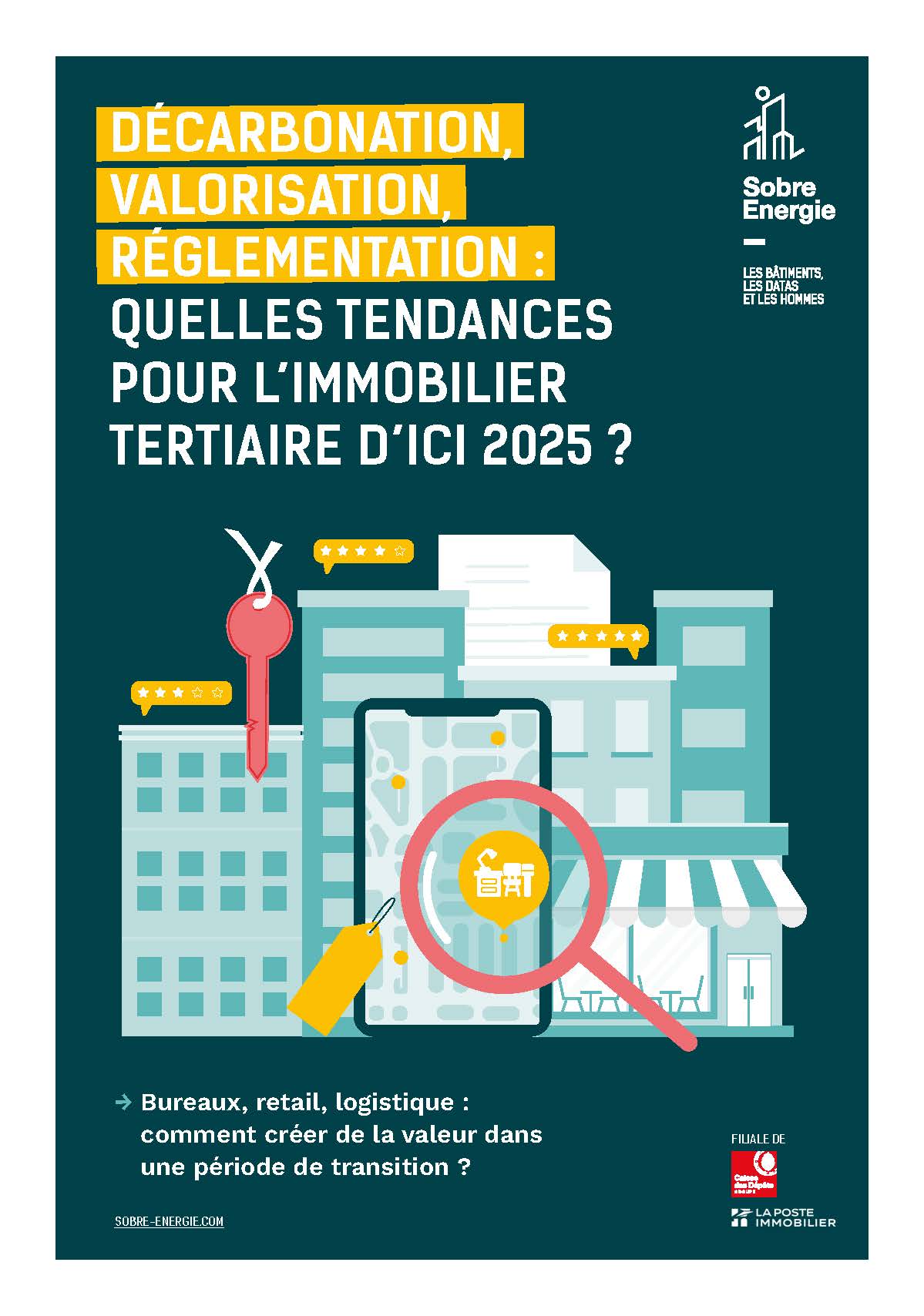The term “sobriety” has become central in the public debate, particularly in a context of global energy crisis marked by the war in Ukraine, the continued rise in energy prices and increasingly harsh winters. On October 6, 2020, the Prime Minister at the time unveiled an ambitious energy sobriety plan, aiming to reduce the energy consumption of tertiary buildings by 10% by 2024 compared to 2019. Bet paid off? According to a government report published in September 2023 , the results exceed initial expectations with a reduction of almost 9% in national electricity consumption.
However, beyond the immediate uses of buildings, the Real Estate Observatory (OID) broadens the vision of sobriety by integrating it into a global approach, discussed during their conference “What sobrieties for which real estate? » of July 2. This reflection is based on the three axes proposed by the Négawatt Association. How then can we progress towards desirable, lasting and integrated long-term sobriety?
The levers of sobriety for tertiary buildings
Dimensional sobriety
Sobriety of use
Sobriety of use is based on a more reasoned use of energy resources in tertiary buildings. This involves better management of electrical equipment, heating and air conditioning systems, and raising user awareness of eco-friendly actions. For example, adjusting the temperature according to actual needs, turning off lights and electronic devices outside of working hours, or using more energy-efficient devices are concrete practices. It is an approach that aims to reduce consumption without compromising comfort or productivity.
The sobriety of pooling
Pooling consists of sharing resources and infrastructures between several entities or users to maximize their use and limit waste. In tertiary buildings, this can result in the pooling of spaces (such as meeting rooms or break areas), equipment (printers, servers, etc.) or even energy resources. For example, buildings bringing together several companies can pool heating or air conditioning systems, or even coworking spaces. This approach makes it possible to rationalize the use of resources and reduce overall energy demand.
Make your sobriety approach a reality with the help of an energy audit
- Establish a precise inventory of energy performance
Before any action, it is essential to draw up a detailed assessment of the energy consumption of the building stock. This involves the collection and analysis of reliable data on different buildings: consumption, costs, energy sources, etc.
An energy efficiency management platform (such as DATAMARC NEO developed by Sobre Energie) makes it possible to automate this process, by centralizing all the information in a single tool. It offers an overview and facilitates the identification of the most energy-intensive positions.
2. Draw up a relevant action plan using the energy audit
An energy audit allows you to know where to start based on your needs, your consumption reduction objectives and your resources. This audit makes it possible to precisely assess energy consumption, identify the most energy-intensive areas and determine the corrective actions to be implemented.
Digital audits by Sobre Energie are used to model different scenarios and simulate the impact of the planned work or packages of actions to be carried out. They offer a global and dynamic vision of energy consumption, thus facilitating the rapid identification of anomalies or deviations from set objectives.
3. Manage and monitor energy performance in real time
Once the action plan has been launched, it is essential to ensure regular monitoring in order to measure the progress made and make the necessary adjustments if necessary. In this regard, the platform plays an essential role by offering particularly effective management and monitoring functionalities.
An energy efficiency management platform, such as DATAMARC for example, provides a customizable dashboard to monitor its fluids in detail and be alerted in the event of excess energy consumption.
Thanks to this increased visibility, it becomes possible to quickly identify any deviation and implement appropriate corrective measures to further optimize energy performance.
To give yourself more chances of implementing concrete and operational sobriety of use, relying on a robot which carries out daily optimizations of set temperatures for users is an effective solution. This is the whole meaning of connected GTB and even more so of light GTB for buildings of 500 to 5000m2. Using this type of solution on 100% electric buildings or with modulating gas unit heaters constitutes a competitive, sustainable solution that accelerates the decarbonization of a multi-site heritage.
4. Involve all stakeholders
Energy sobriety cannot be decreed, it is built with all the stakeholders involved: technical teams, tenants, suppliers, etc. It is a real change of culture that must be driven.
Here again, digitalization facilitates this collaborative dynamic. The tools make it possible to share data, manage collective action plans and actively involve all stakeholders.
In conclusion, energy sobriety is not limited to a series of isolated actions, but constitutes a systemic approach which must permeate all stages of the life of a building: from its construction to its operation, including its daily use. For sobriety to be both desirable and sustainable, it is essential to think about continuous optimization at each level of the chain. By integrating digital real-time monitoring and adjustment solutions such as Sobre Energie's DATAMARC platform , we can guarantee that sobriety efforts remain effective in the long term, while improving user comfort and reducing energy costs. It is this global and evolving vision that will make it possible to avoid any rebound effect and to anchor energy efficiency in our construction and operating habits.
